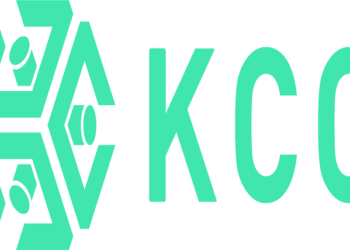Non profit organizations play a crucial role in addressing social issues and improving the world we live in. These organizations work tirelessly to support causes such as education, healthcare, environmental conservation, and poverty alleviation. However, in order to effectively achieve their goals and make a greater impact, non profit organizations need to have a strong online presence. This is where effective web design comes into play.
In this blog post, we will explore the unique needs of non profit organizations in web design and provide tips for creating effective websites that drive engagement and support. By understanding the specific requirements of non profit organizations and implementing user-centered design principles, accessibility features, and trust-building elements, non profit websites can become powerful tools for driving positive change.
Key Takeaways
- Non profit web design plays a crucial role in building a better world.
- Understanding the unique needs of non profit organizations is essential for effective web design.
- User-centered design can benefit non profit websites by improving user experience.
- Creating an effective non profit website requires attention to accessibility and visual design.
- Optimise blog posts for SEO and analytics are important tools for measuring success and driving engagement.
Understanding the Unique Needs of Non Profit Organizations in Web Design
Non profit organizations have different goals and audiences compared to for-profit businesses. While businesses aim to generate revenue and maximize profits, non profit organizations focus on addressing social issues and improving the lives of others. As a result, their websites need to reflect these unique goals and cater to their specific audience.
Non profit organizations often rely on donations and volunteer support to fund their initiatives. This means that their websites need to be designed with these goals in mind. They should make it easy for users to donate, volunteer, or get involved in other ways. The website should clearly communicate the organization’s mission and values, as well as the impact they are making in the world.
The Benefits of User-Centered Design for Non Profit Websites
User-centered design is an approach that focuses on creating websites that meet the needs and expectations of users. This approach is particularly important for non profit organizations as it helps them build stronger relationships with their audience and achieve their goals more effectively.
By putting users first, non profit organizations can create websites that are easy to use, engaging, and effective in driving support. User-centered design involves conducting user research to understand the needs and preferences of the target audience. This research can help inform the design decisions and ensure that the website is intuitive and user-friendly.
Tips for Creating an Effective Non Profit Website
Creating an effective non profit website requires careful planning and attention to detail. Here are some tips to consider:
1. Clear and Concise: Non profit websites should be clear, concise, and easy to navigate. Users should be able to find the information they need quickly and easily.
2. Communicate Mission and Values: The website should clearly communicate the organization’s mission and values. This helps users understand the purpose of the organization and why they should support it.
3. Easy Donations: Make it easy for users to donate by providing clear instructions and a simple donation process. Consider offering different donation options, such as one-time or recurring donations.
4. High-Quality Visuals: Use high-quality visuals, such as images and videos properly edited with a background remover, to create a strong emotional connection with the audience. Visuals can help tell the story of the organization’s impact and inspire support.
5. Mobile Optimization: Optimize the website for mobile devices to ensure that it is accessible to users on smartphones and tablets. Mobile optimization is crucial as more and more people are accessing the internet through mobile devices.
6. Clear Calls to Action: Use clear calls to action throughout the website to encourage users to take specific actions, such as donating, volunteering, or signing up for a newsletter.
The Importance of Accessibility in Non Profit Web Design
Accessibility is crucial for ensuring that all users can access and use non profit websites. This includes users with disabilities, as well as those with slower internet connections or older devices. Non profit organizations should prioritize accessibility in their web design to ensure that everyone can access and support their mission.
One web designer in Kangaroo Valley stated that there are several ways to make a website more accessible. This includes providing alternative text for images, using clear and easy-to-read fonts, ensuring proper color contrast, and providing captions for videos. It is also important to make sure that the website is compatible with screen readers and other assistive technologies.
Using Visual Design to Communicate Your Non Profit’s Mission and Values
Visual design plays a crucial role in communicating a non profit’s mission and values. By using high-quality visuals, non profit organizations can create a strong emotional connection with their audience and inspire support.
When designing a non profit website, it is important to choose visuals that align with the organization’s mission and values. For example, if the organization focuses on environmental conservation, using images of nature and wildlife can help convey the message effectively. Visual design can also help non profit websites stand out and make a greater impact.
Building Trust and Credibility through Non Profit Web Design
Non profit organizations rely on trust and credibility to drive support and achieve their goals. Effective web design can help build trust and credibility by communicating the organization’s impact, transparency, and accountability.
To build trust, non profit websites should clearly communicate the organization’s impact by showcasing success stories, testimonials, and statistics. It is also important to provide transparency by sharing information about the organization’s finances, governance, and decision-making processes. Additionally, non profit websites should prioritize security and privacy to protect user data and build trust with their audience.
The Role of SEO in Non Profit Web Design: Driving Traffic and Engagement
Search engine optimization (SEO) is crucial for driving traffic and engagement to non profit websites. By optimizing for relevant keywords and creating high-quality content, non profit organizations can attract more visitors and drive support.
When designing a non profit website, it is important to consider SEO from the beginning. This includes conducting keyword research to identify relevant keywords that users are searching for. These keywords should be incorporated into the website’s content, meta tags, and URLs. Additionally, creating high-quality and engaging content can help improve the website’s search engine rankings and attract more visitors.
Measuring Success: Analytics and Metrics for Non Profit Websites
Measuring success is crucial for understanding the impact of non profit websites and making data-driven decisions. Non profit organizations should track key metrics such as website traffic, engagement, and donations to evaluate the effectiveness of their website.
Analytics tools can help non profit organizations gain insights into user behavior and optimize their website for better results. For example, by analyzing website traffic sources, organizations can identify which marketing channels are driving the most traffic and focus their efforts accordingly. Additionally, tracking conversion rates can help identify areas for improvement in the donation or volunteer sign-up process.
Empowering Non Profit Organizations through Effective Web Design
Effective web design can help non profit organizations achieve their goals and make a greater impact. By understanding the unique needs of non profit organizations and prioritizing user-centered design, accessibility, trust-building elements, SEO, and analytics, non profit websites can drive engagement and support.
Non profit organizations play a crucial role in addressing social issues and improving the world we live in. With the right web design strategies in place, these organizations can effectively communicate their mission and values, inspire support, and drive positive change.












